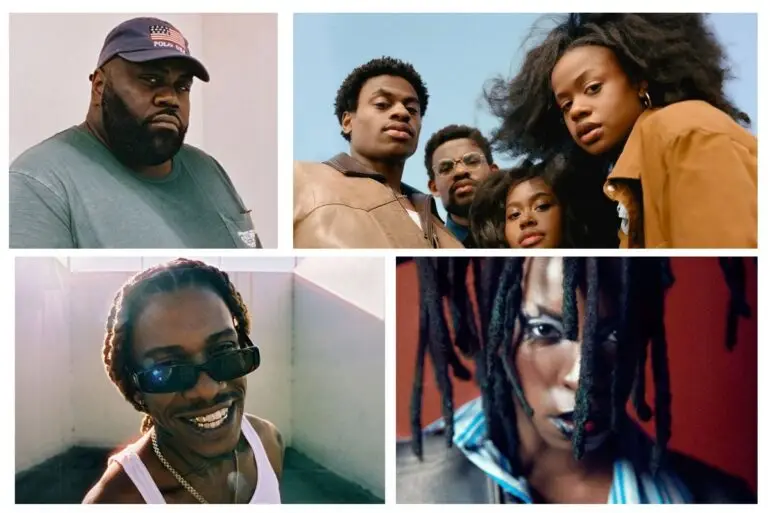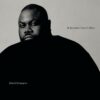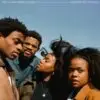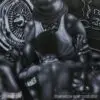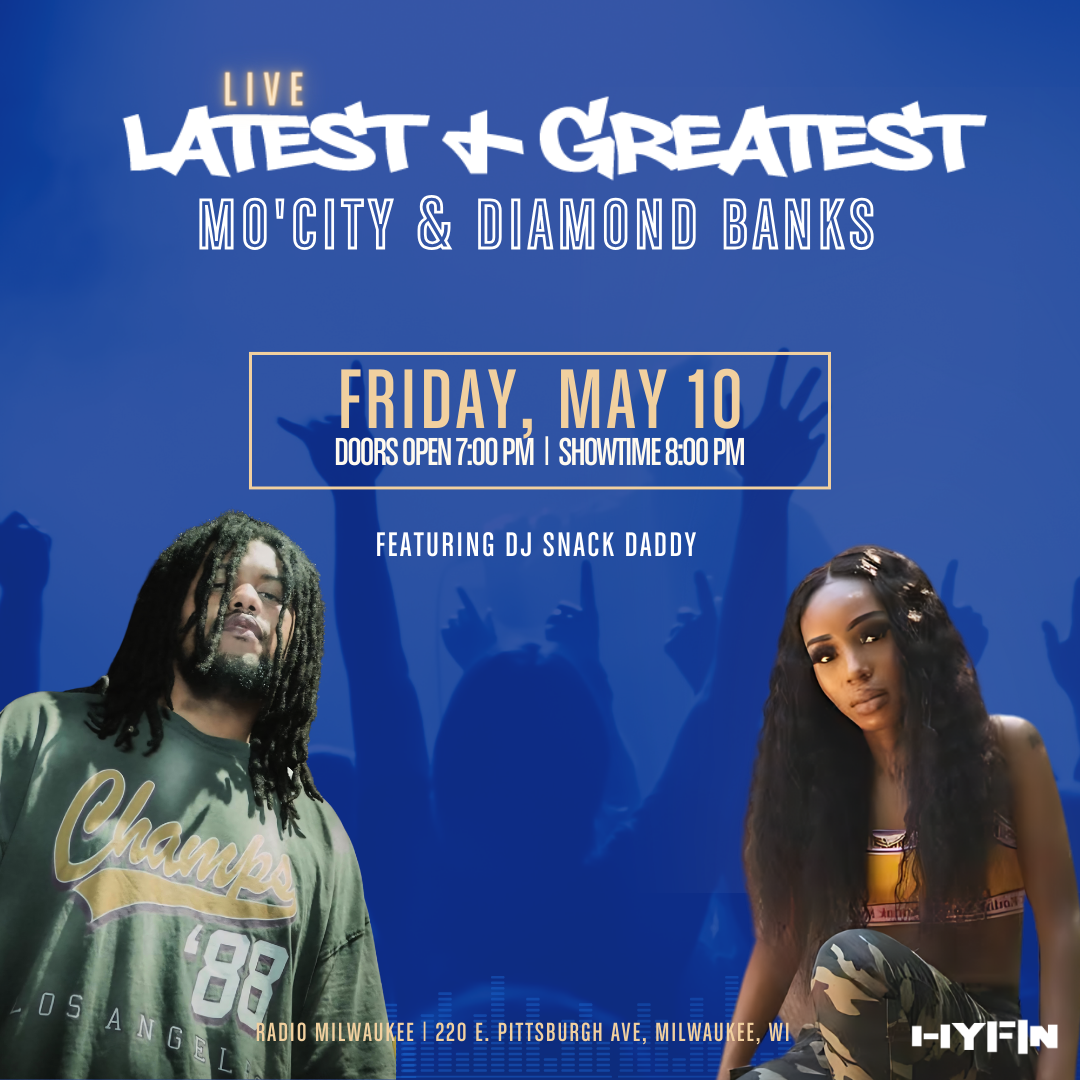“If you watch footage of Jackie Robinson from the ’40s and the early ’50s, he had a lot of flash and pizzazz,” Pollard says. “You can see it follow up with other players who came along … people like Maury Wills, Willie Mays, Rickey Henderson. They brought a different kind of style, which was part of that style that was in the Negro Leagues. Energetic, punchier, aggressive — a kind of baseball which Major League Baseball is trying to bring back since they’ve changed some of the rules.”
“Even though this [was] a horrific period of American apartheid, this was for the people in the Black community an opportunity to really come out and enjoy themselves,” Pollard says.
Rube Foster, a former pitcher-turned-businessman was the “father of Negro League baseball,” Pollard explains. “[Foster] had a very entrepreneurial spirit and he decided he wanted to put together a league of Negro League baseball teams that would be just like Major League Baseball,” Pollard says. “He brought a bunch of different Black owners together in Kansas City, and they created the Negro National League.”
Here we are living in the era of Jim Crow and segregation, and African Americans are forced to live within their own communities. And so to survive and to flourish, they created their own businesses. They had their own stores. They had their own funeral parlors, they had their own teams so that economically they could be able to survive. And many of them flourished.
If we look back to the early 20th century, there’s communities like in New York City, Harlem, there’s Chicago, Bronzeville, there’s Black Wall Street in Tulsa, Oklahoma, all these communities basically said, “Well, we can’t integrate. We’ve been forced to be separate. So let’s start our own businesses and economically figure out how to survive.” So the Negro League teams, they were another sense of economic opportunity for Negro League owners and for the patrons to come and pay and see the game. So the money that circulated at these Negro League games, or the money that circulated in these new stores, it all circulated in the Black community, which helped these communities flourish and survive.
It was dangerous. Listen, you’re talking about a time when Black people couldn’t go into restaurants. They couldn’t go into bathrooms. Everything was “white” or “colored.” … This was a treacherous period in American history for African Americans. … As Hank Aaron said, they’d have to live on a loaf of bread and some peanut butter, because they couldn’t make it in the restaurant or didn’t have enough money to buy sandwiches. … They would go to some boarding house to sleep and the manager told them, “No, you got to sleep in the field on your suitcases.”
What made this man special was that he had a series of pitches where he could go on the mound and he could strike out a whole team of players in nine innings. He was just a phenomenal pitcher. He was a legend. There’s so much myth surrounding Satchel Paige. For example, there was a story that he would call in the outfield, have them stand behind the infield, have them all sit down, and he would strike out the side of the opposing team. That’s how great he was as a pitcher. …
Even when he was past his prime, he was one of the few African Americans besides Jackie Robinson to be called up into the major leagues by the Cleveland Indians in the late 1940s. So he was a hugely phenomenal player. A legend. People think of Babe Ruth as one of the greatest baseball players of all time, I would say Satchel Paige is equal to that — one of the greatest baseball players of all time.
By the ’30s … white reporters started to come out to the games and they got excited by what they were seeing. And that’s when the discussions really started to escalate about shouldn’t African Americans be integrated into the major leagues? Now the one person that really put the kibosh on that was Kenesaw Mountain Landis, who had become the baseball commissioner after the Black Sox Scandal of 1919. And he was completely opposed to African Americans playing the white players. And he even stopped some of the barnstorming that happened in the ’30s between people like Satchel Paige and Dizzy Dean, who would go out and play around the country, because it was exciting to see two of the greatest pitchers, one white, one Black, play against each other.
On the one hand, everybody’s excited. Everybody wanted to see this. A lot of people were excited about the fact that Jackie Robinson was going to integrate Major League Baseball. For me, as a teenager growing up … I thought that was a phenomenal thing that happened in American history. …
It was sort of a major plus in terms of taking African Americans on the road to integration in the sports world. But on the other hand, what was the impact that had on these Negro League teams and Black communities? The teams all of a sudden are losing their best players to Major League Baseball, which made these teams, these Negro League teams, less impactful, not as strong. … Why go and watch Negro League games when you can see some of the best players, who had been Negro League players, now play Major League Baseball? So it had a double-edge impact, which most people never talked about when I was growing up.
In the last 10, 12 years, the Negro Leagues have become much more prominent in Major League Baseball. The fact that now they’ve taken the stats of the major Negro League players and putting them into the Hall of Fame shows that they understand the importance of the Negro Leagues and the many players who came through in the league, some who didn’t get into the Hall of Fame but still were very important players.
Transcript :
DAVE DAVIES, HOST:
This is FRESH AIR. I’m Dave Davies. For most of the first half of the 20th century, professional baseball in the United States was racially segregated. The Negro Leagues, which flourished in the ’20s, ’30s and ’40s, are often remembered with nostalgia as sort of a cultural novelty of American life. Our guest, filmmaker Sam Pollard, has directed a new feature-length documentary called “The League,” which tells their story in vivid detail.
The teams were businesses with colorful Black owners, dedicated fans whose spending spawned new businesses around ballparks, and players who made extra cash by playing exhibition games – sometimes against white teams in southern towns that were less than friendly. Pollard brings the story to life with dozens of interviews, including some never-before-seen footage of stars such as Satchel Paige. Sam Pollard is an acclaimed feature film and TV video editor and documentary producer and director. He edited several of Spike Lee’s films and has produced many award-winning documentaries, including “4 Little Girls,” about the Birmingham church bombings, and the six-part series “Why We Hate,” which premiered on the Discovery Channel. His most recent documentary was “MLK/FBI,” which premiered at the Toronto and New York film festivals. His film about the Negro Leagues, titled “The League,” opened last week at AMC Theaters and will be available for streaming July 14.
Well, Sam Pollard, welcome back to FRESH AIR. You grew up as a St. Louis Cardinals fan. I mean, that – St. Louis is a franchise with a great history. Did you know much about the Negro Leagues?
SAM POLLARD: As a teenager, I knew a little bit. The two names that stood out for me in the Negro Leagues was Satchel Paige and Josh Gibson. But I had been a major St. Louis Cardinals fan from the 1964 Cardinals that had, you know, phenomenal Black players like Lou Brock, Curt Flood and Bill White. So then I learned about – a little bit about the Negro Leagues, and that’s with Josh and Satchel.
DAVIES: You know, this is about segregation in baseball. But – and I think a lot – this would surprise a lot of people – if you go back to the earliest days of the game in the 19th century, there weren’t the same hard color lines. How common was it to find Black and white players in the same lineup?
POLLARD: Well, many people think that the first African American player to play in Major League Baseball was Jackie Robinson, but really it was a gentleman named Moses Fleetwood Walker. So there were Black players playing on white teams. But, you know, they get – became the – a point where, you know, some white players decided they didn’t want to play with Black players. And so the white teams started to say, we’re going to exclude Black players altogether. And that led to Rube Foster, who had been a pitcher and a manager and an owner of a team in – you know, in Chicago to decide that in 1920, he wanted to create his own Negro National League, which he did with the other owners who had independent Negro League teams.
DAVIES: Right. Right. I want to talk about Rube Foster. He’s quite a character. But, you know, it’s interesting. I mean, this, of course, in the early 20th century, was the time when Jim Crow laws really descended on the South and, you know, in other ways in the North as well. And a lot of sort of independent Black institutions arose because, you know, so many opportunities were cut off. Is that what you saw with baseball teams and owners starting them? I mean, how did these things get going?
POLLARD: It’s the same thing. I mean, here we are living in the era of Jim Crow and segregation, and African Americans are forced to live within their own communities. And so to survive and to flourish, they created their own businesses. They had, you know, their own stores. They had their own funeral parlors. They had their own teams so that economically they could be able to survive. And, you know – and many of them flourished. I mean, if we look back to the early 20th century, there’s communities like in New York City – Harlem; there’s Chicago – Bronzeville; there’s Black Wall Street in Tulsa, Okla. All these communities basically said, well, we can’t integrate. We’ve been forced to be separate, so let’s start our own businesses and economically figure out how to survive.
So the Negro League teams – they were another sense of economic opportunity for Negro League owners and for the patrons to come and pay and see the game. So the money that circulated at these Negro League games, or the money that circulated in these new stores – they all – it all circulated in the Black community which – you know, which helped these communities flourish and survive.
DAVIES: Right, and they were popular. Tell us about Rube Foster – Andrew Rube Foster, who was – you know, he’s in the Hall of Fame in Cooperstown – a legendary figure. Tell us about him and what his role here was here.
POLLARD: Rube Foster started out as a pitcher. He was a phenomenal pitcher. Then he became an owner – a manager, and then he became an owner. And he decided – he knew that – you know, he was – he had a very entrepreneurial spirit. And he decided he wanted to put together a league of Negro League baseball teams that would be just like Major League Baseball. So in 1920, he brought a bunch of different Black owners together in Kansas City, and they created, you know, the Negro National League, which flourished from its inception in 1922 when the – by the time Rube Foster passed away in 1930, it went on – it was in decline. So he was – he’s considered – you know, I would consider him the father of Negro League baseball.
DAVIES: And it’s interesting that Kansas City is a real center of Black baseball from then and much longer – you know? – not New York, not Chicago.
POLLARD: Well, you have, in Kansas City, the Kansas City Negro League Museum – you know? – that if you go there, you’ll be amazed at the imagery, the shirts, the – they even have replicas of all the different players who’ve played in the Negro Leagues – Cool Papa Bell, Josh Gibson, Satchel Paige, you know, Buck Leonard. It’s amazing – Buck O’Neil. And, you know, quite honestly, I’m going there tonight for a screening of the film.
DAVIES: Oh, that’s terrific.
POLLARD: So it’ll be – it’ll really be fun. And also, they had one of the greatest teams that played in the Negro Leagues in the ’30s and the ’40s, the Kansas City Monarchs…
DAVIES: Right, right.
POLLARD: …Which is where Jackie Robinson came from when he was called by Branch Rickey to become a member of the Brooklyn Dodgers.
DAVIES: Right, all the way up in the ’40s. In the Negro Leagues of the 1920s, you know, Rube Foster, this terrific pitcher who invented the screwball – right? – and taught it to Christy Mathewson, was a huge entrepreneurial figure in the game. The last chapter in his life is kind of sad. Tell us what happened.
POLLARD: Well, he was in the hotel, and there was a gas leak. He inhaled it. It caused some mental issues, and he was never the same. He went into an institution. And then he – by 1930, he passed away. So that was a very sad ending for him.
DAVIES: Rube Foster forms this league, the Negro National League, and then a bunch of Eastern owners get together and form an Eastern Colored League. So you had kind of two leagues, as you did in Major League Baseball. And there was – what was it called? – the Colored World Championship. Tell us about that.
POLLARD: Yeah, it was called the Colored World Championship, and it was an opportunity for these opposing leagues to get together with their best teams to play each other, you know? And these games were phenomenal. And then later on, after Rube Foster passed away, Gus Greenlee and Cum Posey, out of Pittsburgh, created another league, you know, that brought together – they created what’s called the East-West Classic, in the ’30s, that brought together teams from the East and from the West to be like, you know, what the Major League calls the All-Star Games. So, you know, there was a competition, but it was a competition that – the best players came out and played and had fun and hung out. As Buck O’Neil said, they would go to these games at these East-West Classics, and then they would go and hang out at night and then they’d get together the next day to play another game. So, you know, this was – they didn’t make a lot of money, but there was a lot of camaraderie and personal engagement between players and their teams.
DAVIES: How was the kind of baseball played in the Negro Leagues different from what was played in white organized baseball?
POLLARD: Well, by the ’20s in white baseball, it was – you know, everybody was trying to follow in the footsteps of the great Babe Ruth, who was a home run hitter. So it wasn’t about hit and run or bunt and steal. It was about trying to hit it out of the park. And the Negro Leagues had a sort of different style. It was much more scrappy. You know, the hit and run – it was stealing bases. It was a little more, you know, exciting, a little more pizzazz. And if you see, you know, the Negro League players who went into the major leagues, you saw that they brought that kind of style. If you watch footage of Jackie Robinson from the ’40s and early ’50s, he had a lot of flash, you know, and pizzazz when he was on the base paths.
And, you know, and then you can see it follow up with other players who came along who played in major league baseball. They brought that same kind of energy to major league baseball – people like Maury Wills, you know, Willie Mays, you know, Rickey Henderson. They brought a different kind of style, which was part of that style that was in the Negro Leagues – energetic, you know, punchier, you know, aggressive kind of baseball, which is – you know, major league baseball is trying to bring back since they’ve changed some of the rules.
DAVIES: Right. You get a runner on first, and you can have them stand there and hope somebody hits a big homer, or you can be aggressive and take a big lead and steal – and maybe steal third. And, you know, it is a different kind of game. And then there were acrobatic catches too – you know, backhand flips to start double plays, that kind of thing, too, right?
POLLARD: Well, look at Willie Mays in some of these classic footage…
DAVIES: Yeah.
POLLARD: …When he would catch a ball from behind his back, you know, and then turn and throw, you know? So these guys were phenomenal players in the Negro Leagues.
DAVIES: They were really important to the Black communities that they served. When they had these championship games, did that get the attention of white media?
POLLARD: By the ’30s, it did. And then, you know, people in…
DAVIES: The second iteration. Yeah.
POLLARD: In the second iteration of the Negro Leagues, the reporters started to come – white reporters started to come out to the game, and they got excited by what they were seeing. And that’s when the discussions really started to escalate about, should African Americans be integrated into the major leagues? Now, the big – the one person that really put the kibosh on that was Kenesaw Mountain Landis, who had been – become the baseball commissioner after the Black Sox scandal of 1919. And he was completely opposed to Negroes playing with white players – or African Americans playing with white players. And he even stopped some of the barnstorming that happened in the ’30s between people like Satchel Paige and Dizzy Dean, who would go out and play around the country, you know, because it was exciting to see two of the greatest pitchers – one white, one Black – play against each other.
DAVIES: We’re speaking with filmmaker Sam Pollard. His new film “The League” opened last week at AMC Theaters and will be available for streaming July 14. He’ll be back to talk more after a short break. This is FRESH AIR.
(SOUNDBITE OF DICE RAW’S “PREGUNTA”)
DAVIES: This is FRESH AIR, and we’re speaking with veteran filmmaker Sam Pollard. His new documentary film “The League” opened last week at AMC Theaters and will be available for streaming July 14.
So the Negro Leagues of the 1920s kind of fell apart after one of its leading entrepreneurs, Rube Foster, died. And, of course, the Depression hurt all kinds of businesses. It revived in the 1930s. And I guess, to some extent, this was fueled by the northern migration of Blacks from the South to the North, wasn’t it?
POLLARD: Well, yeah. I mean, you got to remember this was the second Great Migration, you know, of African Americans leaving places like Mississippi and Georgia and Alabama and going to places like Chicago and Pittsburgh and New York and Detroit. And one of the major hubs in the ’30s was Pittsburgh – was a steel town. You know, lots of Black people found opportunities there. And there were two men who basically said, let’s get some entertainment in here. Let’s get some sports in here. And it was two gentlemen – one was named Cum Posey and the other was named Gus Greenlee.
And Cum Posey had been a young athlete, and he fell in love with baseball. He played a little baseball, and he decided to pick up a team called the Homestead Grays. And on the other side of the spectrum, we had Gus Greenlee, who was – you know, was considered sort of an underworld figure, you know, in the community, but also, you know, like, the Robin Hood of the community. And he picked up the team that was – which was – became the Pittsburgh Crawfords. And they became very competitive against each other. And these were two – in the ’30s, they were two of the most popular teams in Negro league baseball.
DAVIES: Yeah, it’s really fascinating. They’re kind of like the two dynasties, and they’re both in Pittsburgh. I mean, there was the Pittsburgh Crawfords. And Cumberland Posely (ph) – Cum Posey’s team, the Homestead Grays, was based in Homestead, which is a town east of Pittsburgh, a steel town famous for a very bitter strike in the late 19th century. And out of that – those two towns, they found an economic base. There were enough people going to games to really fuel this rivalry, huh?
POLLARD: Oh, yeah, because, you know, these – they were competing to be champions, and they were competing for players. I mean, they were able to get players to go from one team to the other. I mean, Josh Gibson went from Homestead Grays to the Pittsburgh Crawfords, back to Homestead Grays. You know, they had other players – you know, Oscar Charleston was – played with those two teams. I mean, these was – these were competitive men who wanted to get the best players they could.
And the thing about Gus Greenlee that’s also special, too, is that he did two things. He had a club called the Crawford Grill that became very popular in Pittsburgh at the time, that attracted great talent like Lena Horne and Mary Lou Williams. And he also was one of the first people to have his own stadium to create night baseball, which we didn’t put into the film. But he was the first owner to have, you know, games played at night. He brought in lights. So these guys are pretty special. You know, they’re both special. And, you know, it was great to be able to understand who they were. And we interviewed – the main person who talks about them both is a gentleman named Mark Whitaker, who was from Pittsburgh.
DAVIES: Right, right. And, of course, Pittsburgh – you know, you think of it as a steel and coal town, but it became a real center of Black culture, right? There was one of the leading newspapers, the Pittsburgh Courier, there and a real jazz scene, right?
POLLARD: Oh, yeah. And it also turned out some wonderful writers. I mean, August Wilson is from Pittsburgh, and John Edgar Wideman is from Pittsburgh. I mean, you know, it’s a pretty special city. It was a special, special city in the ’30s.
DAVIES: All right. So the dominant player in the Negro leagues of the ’30s was Satchel Paige, who was more widely known to, well, white Americans than most of the players of the age. But he was pretty remarkable. What made him so special?
POLLARD: Well, what made this man special was that he had a – you know, he had a series of pitches where he could go on the mound and he could strike out, you know, a whole team of players in nine innings. You know, he was just a phenomenal pitcher. Everybody – he was a legend, you know? There’s so much myth surrounding Satchel Paige. For example, there was a story that he would call in the outfield, have them stand behind the infield, have them all sit down, and he would strike out the side, you know, of the opposing team. That’s how great he was as a pitcher.
And he was so great that, you know, he was – you know, he played for the Crawfords, but he played for other teams in the league. And he even went south, played in the Dominican Republic. And even at his – you know, even when he was past his prime, he was one of the few African Americans besides Jackie Robinson to be called up into the major leagues by the Cleveland Indians in the late 1940s. So he was a hugely phenomenal player, I mean, and a legend. I mean, you could compare him on par with – if people think of Babe Ruth as one of the greatest baseball players of all time, I would say Satchel Paige is equal to that – one of the greatest baseball players of all time.
DAVIES: I thought we’d listen to a little bit of tape. You have such great voices in this film. And this is a montage of folks talking about Satchel Paige. We’ll hear Andrew Porter of the Baltimore Elite Giants, a guy named Ted “Double Duty” Radcliffe, who was from the Pittsburgh Crawfords, where Satchel played. We’ll hear writer Amiri Baraka and Buck O’Neil, another player, talking about what you just mentioned, how he would sometimes call his fielders to sit down and let him strike out the side. And then we’ll hear – we’ll finish with Satchel Paige’s daughter, Pamela Paige O’Neil. Let’s listen.
(SOUNDBITE OF DOCUMENTARY, “THE LEAGUE”)
ANDREW PORTER: When Satchel throw, the ball look small – throw the small ball, which is true ’cause it be turning so fast it looks smaller than the regular ball.
TED RADCLIFFE: He went out on that mound, and he looked up at the crowd. He said, Duty, the sun is shining, but I’m going to make them think it’s nighttime. He struck out 21 of the 28 men he beat.
AMIRI BARAKA: We knew when we saw Satchel Paige – for instance, when I saw Satchel Paige, then Satch could call in the whole team and strike everybody out. You know, I saw that. He’d call them all in.
BUCK O’NEIL: Here is seven of us kneeling around the mound. He threw nine pitches, and the side was out.
PAMELA PAIGE O’NEIL: When he was in the backyard, he just did amazing things. Like, he’d say, look at that berry hanging over there on the bush. I bet I can hit it. And I said, no, you can’t. And he would pick up something and hit it. And I would say, oh, wow. You know, that’s what little children do. They don’t think, well, it was 55 feet away, and it was the size of a quarter. You would have to be a heck of a shot to make it.
DAVIES: And that is tape from the film “The League,” directed by our guest, Sam Pollard – amazing voices in that film, particularly Pamela Paige O’Neil, Satchel Paige’s daughter. So in the 1930s, again, there were two leagues, the Negro National League in the East and the Negro American League in the Midwest. And they would meet at a championship game at Comiskey Park in Chicago, which is where the White Sox played, of course. Fifty thousand people would attend this. Is that right? What – tell us a little bit about what that series was like.
POLLARD: Well, it was called the East-West Classic. And you can see from some of the footage that some of the greatest players from both leagues would come together – I mean, Satchel Paige, Cool Papa Bell, Josh Gibson. And it was, you know – as Buck O’Neil said, it was like, you know, having a three- or four-day party. They would play their games, and then they would hang out at night, you know, and hang out with the people who came to the games. And it was really a great opportunity for the players to intermingle and hang out with each other and get to know each other again or – you know, or hang out even more than they had before. And it was fun, you know? It’s sort of – I mean, again, it was sort of like the Major League All-Star Game, you know, where all the best of the best would come together to just check each other out and play against each other and have fun. Baseball was – you know, it was the American pastime for both Blacks and whites in this country. And it was a game that brought people together.
DAVIES: And would Black celebrities come, you know, people – you know, singers, writers?
POLLARD: Yeah. People like – there would be people like Lionel Hampton and Lena Horne and Count Basie. They would all come to hang out at these games. And some of these players, some of these celebrities owned teams. They owned – they were partial owners of teams, like Lionel Hampton. You know, they had – they owned pieces of some of these teams. So, you know, this was – this is – you could consider, even though this horrific period of American apartheid – this was, for the people in the Black community, an opportunity to really come out and enjoy themselves.
DAVIES: Sam Pollard’s new film, “The League,” opened last week at AMC theaters and will be available for streaming July 14. He’ll be back to talk more after this short break. I’m Dave Davies, and this is FRESH AIR.
(SOUNDBITE OF SONG, “IT DON’T MEAN A THING (IF IT AIN’T GOT THAT SWING)”)
LIONEL HAMPTON: (Vocalizing).
DAVIES: This is FRESH AIR. I’m Dave Davies. We are speaking with acclaimed filmmaker Sam Pollard, whose new documentary tells the story of the Negro Leagues – for decades, the only place Black athletes could play in the segregated world of professional baseball. The film tells the story not just of players, but of owners and fans and the social changes that eventually led to the integration of Major League Baseball and the decline of the Negro Leagues. The film, titled “The League,” opened last week at AMC Theaters and will be available for streaming July 14.
One of the fascinating parts of the Negro Leagues and what these players did – I mean, they didn’t – you know, they were paid well, I guess, by some standards, but they weren’t rich and they really played a lot, right? They had side hustles. They would play exhibition games in the winter. Where would they play? Who would they play?
POLLARD: Well, these teams – these barnstorming teams of people like Satchel Paige would play white players like Dizzy and Daffy Dean, and they would play all through the South and in the Midwest. And you got to remember, even for white players in the major leagues, when the off-season came around, there wasn’t much that they could afford to do. I mean, there wasn’t a lot of opportunity. Some of them, you know, had to take side jobs to just survive, you know? It’s very different than Major League Baseball players today who sign huge contracts. So this was a way – the barnstorming was a way for them to make some extra money, you know? And that’s why they did it, you know, to make some extra money, but also to have some fun playing baseball and to show their skills against white players, which was exciting. And as we say in the film – someone says in the film – Dizzy Dean said one of the best players he ever played against, and it wasn’t – he wasn’t talking about himself. He was talking about Satchel Paige. And he said if they had been together – playing together, they would have won the World Series by the end of the summer.
DAVIES: You know, when Dizzy Dean and Satchel Paige met in that famous exhibition game in Cleveland – and the game wouldn’t be integrated for another 13 years, after – till after World War II. But did it have an impact? Did people start thinking about integrating the game at all because of these games?
POLLARD: I would say the sports people probably did and probably some folks probably did, sure. I mean, there was always people out there – white people and Black people – that thought that there should be these games – Major League Baseball should be integrated. Now, you know, the rule at the time was that, you know, whites and Blacks had separate lives. So no one, basically, was going to take that leap. And with Mountain – Kenesaw Mountain Landis being the baseball commissioner, he ruled Major League Baseball with an iron fist. So he wasn’t going to let anybody, you know, tell him that baseball should be integrated.
DAVIES: One of the interesting parts of this, of course, was when they would – the players would go on these exhibition tours, the barnstorming tours in the American South, sometimes playing, you know, white teams. That was tricky – wasn’t it? – traveling in the South for these folks – tricky or dangerous.
POLLARD: It wasn’t tricky, man. It was dangerous.
DAVIES: Dangerous, yeah.
POLLARD: I mean, listen. You’re talking about a time when Black people couldn’t go into restaurants. They couldn’t go into bathrooms. Everything was white or colored. You know, they couldn’t go into towns at certain times of the day or the evening, you know? I mean, this was a treacherous period in American history for African Americans, on the one hand. This was also, for them in – those in their communities, it was a place of solace and community. So, you know, it was a tricky time. I mean, and for these players to be able to sort of play the game and have fun, that was great.
But then they had to deal with the idea that, you know, as Hank Aaron said, they could have – they’d have to live on a loaf of bread and some peanut butter, you know, because they couldn’t eat in a restaurant or they didn’t have enough money to buy sandwiches. One story was when they went to some place, they thought they were going to go to some boarding house to sleep, and the management told them, no, you’re going to have to sleep in the field, you know, on your suitcases. I mean, this was, you know, it wasn’t all – everything great, it was tough times for these players, also.
DAVIES: Yeah. I thought we’d listen to some voices from the film on this subject. This is – these are very – folks talking from our guest Sam Pollard’s film, “The League,” about the challenges that African American players faced traveling in the South.
(SOUNDBITE OF DOCUMENTARY, “THE LEAGUE”)
UNIDENTIFIED PERSON #1: Black hotels in the South – even the major cities like Birmingham, Memphis, New Orleans and whatnot – they were very rare. And usually, the ballplayers would find a rooming house – a Black rooming house.
UNIDENTIFIED PERSON #2: I can remember a town where we put up in a rooming house in Arkansas. When you turned on the lights, you see the bedbugs start to go for cover. You’d have to sleep with the lights on because if you don’t, those little gremlins would come out and you wouldn’t get any sleep anyhow.
UNIDENTIFIED PERSON #3: Satchel Paige makes the point – one of his first games, they arrived at the park and he said, oh, I’m really tired. I want to hurry up and get to bed and get some rest. And the manager said, what bed? What do you mean get to rest? We’re staying here in the ballpark. You had to sleep on your suitcase in the ballpark.
UNIDENTIFIED PERSON #4: We didn’t stop much because we – they wouldn’t feed us in the restaurants, so we had to eat out of paper sacks, go in the grocery store.
HANK AARON: We got $1 a day meal money, and we would buy one loaf of bread and we would buy a jar – a big jar of peanut butter. That’s what we lived off of for three or four days.
DAVIES: And that was the legendary Hank Aaron there at the end who, you know, hit over 700 home runs in the Major Leagues, eventually. Before that, we heard Richard Stamz, who was a Negro Leagues promoter, Ted Page, who played for the Pittsburgh Crawfords, and Chet Brewer of the Kansas City Monarchs. And they’re all from the film “The League,” directed by our guest, Sam Pollard. You know, for all of the hardship that they faced, did white people want to see these Black teams play? I mean, were they playing for white audiences a lot of the time?
POLLARD: Well, I would say, during the barnstorming period, they were playing for both Black and white audiences. You know, I mean, there would be white people in the South who’d want to see Black players and vice versa. But, you know, that’s – I don’t think it’s unusual that white people want to see Black players. But, you know, remember; there was rules that were in place that took a long time for them to be broken. So you know, it wasn’t like they were completely embraced.
DAVIES: So you know, during World War II and afterwards, there was a growing effort to get white owners to begin hiring Black players and integrating the game. I mean, the famous commissioner of baseball Kenesaw Mountain Landis was standing in the way of this. But the film describes a remarkable meeting – I think this was 1943 – where Paul Robeson, the famous, you know, singer, actor and athlete, makes a pitch to the owners, along with some others, for integrating the game and hiring some Black players. Tell us about that. Tell us what happened.
POLLARD: Well, that was something that we uncovered that I had never known about, you know? As great as Paul Robeson is from what I understood about him growing up, I never knew that he had some sort of impact or input into wanting to integrate the major leagues. So when we found the fact that he went before some major league owners and he basically, you know, said, it’s about time we integrate – you guys integrate Major League Baseball, it was a real surprise, you know?
And, you know, he was – as we all know, he was one of the greatest African American artists in the 20th century. And he went to this meeting. And as his son said, you know, he sort of improvised. He didn’t have any documents or any statement written. He just talked off the cuff about the importance of thinking about integrating Major League Baseball, having Black players play with white players. And people listened and paid attention because he was Paul Robeson. But it didn’t really effectively have much impact, you know? But this was something that when we were doing research, we uncovered. And we knew that it was important to put it in the film because of the status.
DAVIES: Right, right. And is it true that the owners applauded when he finished his presentation?
POLLARD: Yeah, they probably did because he was Paul Robeson. Remember; this was a gentleman who was a great baritone, who was a great – he was a Hollywood movie star by this period. He was performing “Othello” on Broadway. So sure, he would get the respect due to him. But that didn’t quite – you know, quite honestly, you know, it didn’t move the needle (laughter).
DAVIES: Right, right. Well, as long as the commissioner was there – you know, this is interesting because, I mean, the commissioner, Kenesaw Mountain Landis, my understanding is he said publicly, well, that’s really up to the owners. Like, he was sort of professing neutrality on the question of integrating baseball. I mean, was he neutral?
POLLARD: Well, he wasn’t. I mean, but, you know, he was basically presenting himself in a way that says, you know, I’ll leave it to the owners. But the reality was he had – you know, as I said earlier, he was a gentleman who controlled Major League Baseball with an iron fist. So on the one hand he might have said it’s up to the owners, but in reality the owners weren’t going to make a move unless he blessed it. And he wasn’t blessing integrated baseball.
DAVIES: He died in 1944, I guess, the year after that meeting with Paul Robeson. And things would soon change.
POLLARD: Yeah, because the commissioner became – Happy Chandler became the commissioner. And just think of his name – Happy Chandler.
DAVIES: (Laughter).
POLLARD: He had a different personality. He was more open to integration. And when – finally, when Branch Rickey decided that he wanted to integrate the Brooklyn Dodgers, they were open to it.
DAVIES: Let’s take another break here. Let me reintroduce you. We are speaking with filmmaker Sam Pollard. His new film, “The League,” opened last week at AMC Theaters and will be available for streaming July 14. He’ll be back to talk more after a short break. This is FRESH AIR.
(SOUNDBITE OF AWREEOH SONG, “CAN’T BRING ME DOWN”)
DAVIES: This is FRESH AIR, and we’re speaking with veteran filmmaker Sam Pollard. His new documentary film, “The League,” opened last week at AMC Theaters and will be available for streaming July 14.
You introduce us in the film to a woman who was a major figure in the game, Effa Manley. Tell us about her.
POLLARD: Well, Effa Manley is a very interesting lady, again, another person I didn’t know much about until I started working on this film. But she grew up in Harlem. And people had this dialogue – was she a white woman, was she a Black woman? – because of her skin complexion. But she lived as a Black person in the Black community. She married Abe Manley. And he – and him and her became the owners, co-owners, of the Newark Eagles, a Black baseball team. And she was determined to make her team successful, and she took her team to the 1946 World Series.
And, you know, she was very frank. She was outspoken. I mean, the biggest moment in terms of our film is her challenging, you know, the owners of the store in Harlem, department store called Blumstein’s, that didn’t have any Black women working in the store. And she challenged the owners. And they finally thought that she – they saw the error of their ways, and they started hiring Black women into Blumstein’s.
And she was very proactive, you know, very, very outspoken and one of the few owners who challenged people like Branch Rickey, who were signing Black baseball players when integration happened and not compensating the Black owners of these teams. I mean, Jackie Robinson and Don Newcombe and Roy Campanella, they all signed contracts with Branch Rickey and the Brooklyn Dodgers. But Branch Rickey didn’t compensate the teams that they came from, specifically the Baltimore Elite Giants and the Kansas City Monarchs.
DAVIES: Yeah, that’s one thing that is quite clear in the film, that Branch Rickey, who is regarded by many as a hero for taking the step of signing Jackie Robinson, you know, wouldn’t pay the teams that they came from, you know, who they were under contract with, any compensation for it. When Jackie Robinson joins the Brooklyn Dodgers in 1947 playing second base, what was the reaction among Black baseball fans?
POLLARD: Well, you know, it’s a double-edged thing, you know? On the one hand, everybody’s excited. Everybody wanted to – you know, a lot of people were excited at the fact that Jackie Robinson was going to integrate the Major League Baseball. I mean, for me as a teenager growing up, one of the seminal stories that I heard was, 1947, Jackie Robinson from the Kansas City Monarchs is signed by Branch Rickey to play in Major League Baseball. Now, here in 1965, 1966, I thought that was a phenomenal thing that happened in American history.
Now, no one ever talked about, you know, for me growing up, the impact that had on teams in the Negro Leagues and teams in those Black communities. No one talked about that. It was all about Jackie Robinson integrating baseball that led the way for Willie Mays and Ernie Banks and Hank Aaron. So you know, that’s always been the story. But it was a double-edged story when you really sort of look at it and dig into it because on the one hand, you know, it was sort of a major plus in terms of taking African Americans on the road to integration in the sports world. But on the other hand, what was the impact it had on these Negro League teams in Black communities?
The teams – all of a sudden, they were losing their best players to Major League Baseball, which made these teams, these Negro League teams, less impactful, less strong – not as strong. And so, you know, and the other thing happened is the attendance of Black people to the Negro league games started to diminish because now they could go to Cleveland Indians’ field and see, you know, Larry Doby or Satchel Paige. They could go to the New York Giants and see Willie Mays and Monte Irvin. They could go to Milwaukee Braves and see Hank Aaron. You know, they could go to the Chicago Cubs and see Ernie Banks. So why go and watch Negro League games when you can see some of the best players who had been Negro League players now play Major League Baseball? So it had a double-edged impact, which most people never talked about when I was growing up.
DAVIES: And the Negro League was pretty much gone by – what? – 1960, or…
POLLARD: 1960 it was done.
DAVIES: Did the integration of baseball give a push to integration in other kinds of employment at all?
POLLARD: Some people feel that. But here’s my take on that. After World War II, obviously, many African Americans who had served – and many had given their life for this country – come back and understand and see that, you know, there’s a certain kind of – listen. We are sick and tired of being separate and unequal. It’s about time changes come – happen. Now, it wasn’t to say that there wasn’t always this feeling, we’re sick and tired of being unequal. Always been there, you know, and there’s always been fights to integrate the world, both from an educational perspective, both from an economic perspective, both from a sports perspective. But I contend that after World War II, there was an acceleration of wanting to stop this notion of Blacks being unequal and second-class citizens.
And so you saw it happen in the sports world with the integration of Jackie in the major leagues. You saw it happen in education with Brown v. Board of Education. You know, you saw it happen when Dr. King came to the fore, you know, in Montgomery, Ala., with the Montgomery bus boycott. America was having to face the fact that African Americans are sick and tired of being treated as second-class citizens, you know? And so there was this push for change, you know, which was galvanized by many things, not just by Jackie going into the major leagues, by the Brown v. Board of Education, by Dr. King coming to the forefront, by the creation of the SCLC, you know, the Freedom Riders. I mean, there’s so many things that led to this real change in the second half of the 20th century.
DAVIES: When did the Negro Leagues get some recognition from the Hall of Fame? I guess Satchel Paige was the first, wasn’t he?
POLLARD: Yeah. He was the first. But I would say that in the last 10, 12 years, the Negro Leagues have become much more prominent in Major League Baseball now. And the fact that now they’re taking the stats of major – of Negro League players and putting them into the Hall of Fame shows that they understand now the importance of the Negro Leagues and the many players who came through the Negro Leagues, some who didn’t get into the Hall of Fame but still were very important players.
DAVIES: Well, Sam Pollard, thanks so much for speaking with us. I really enjoyed the film.
POLLARD: Thank you for having me.
DAVIES: Sam Pollard’s new film is titled “The League.” It opened last week at AMC Theaters and will be available for streaming July 14. Coming up, jazz critic Kevin Whitehead reviews a new set of recordings from Charles Mingus from the 1970s. This is FRESH AIR.
(SOUNDBITE OF CHARLES MINGUS’ “SELF-PORTRAIT IN THREE COLORS”) Transcript provided by NPR, Copyright NPR.



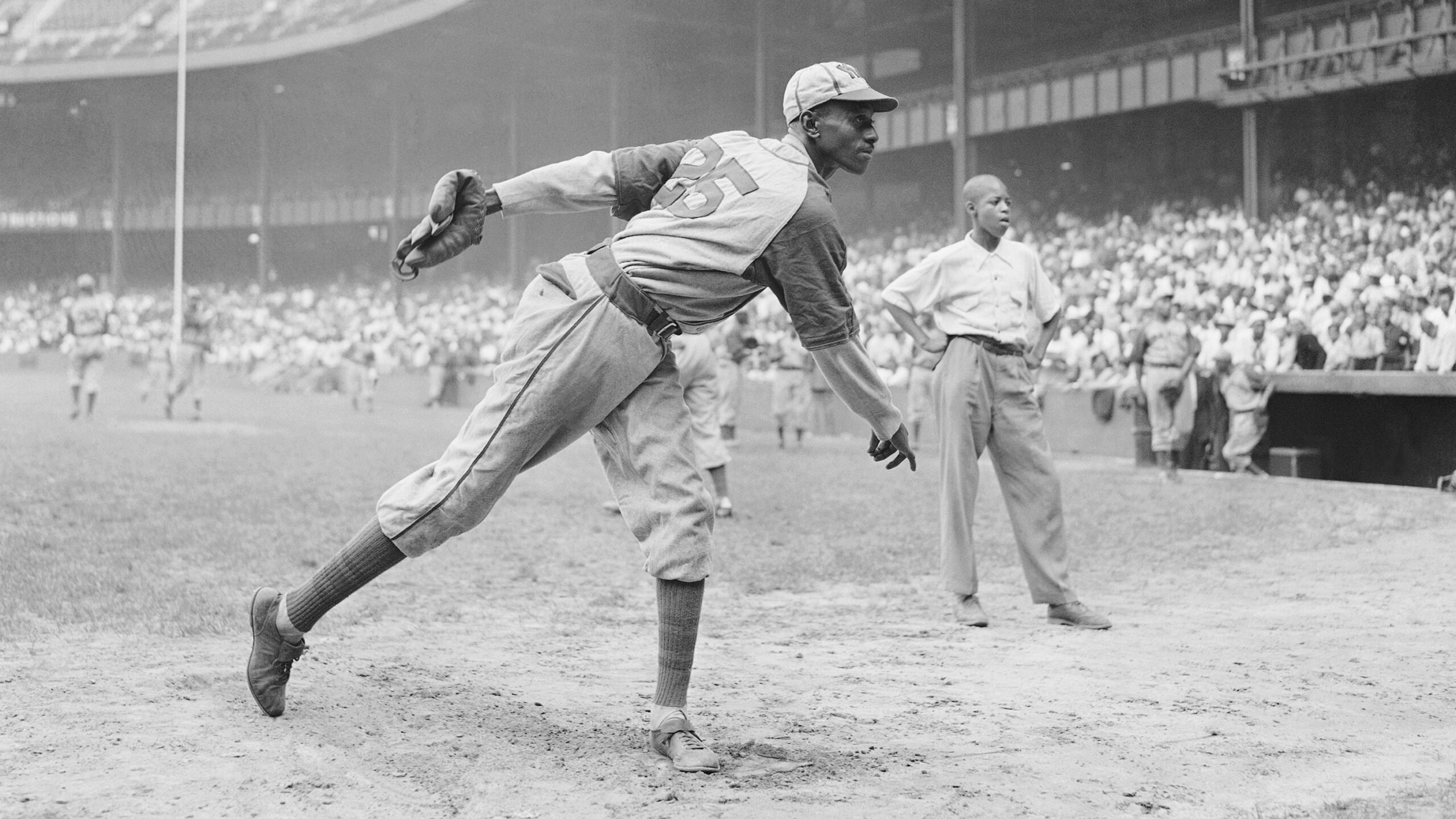
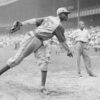
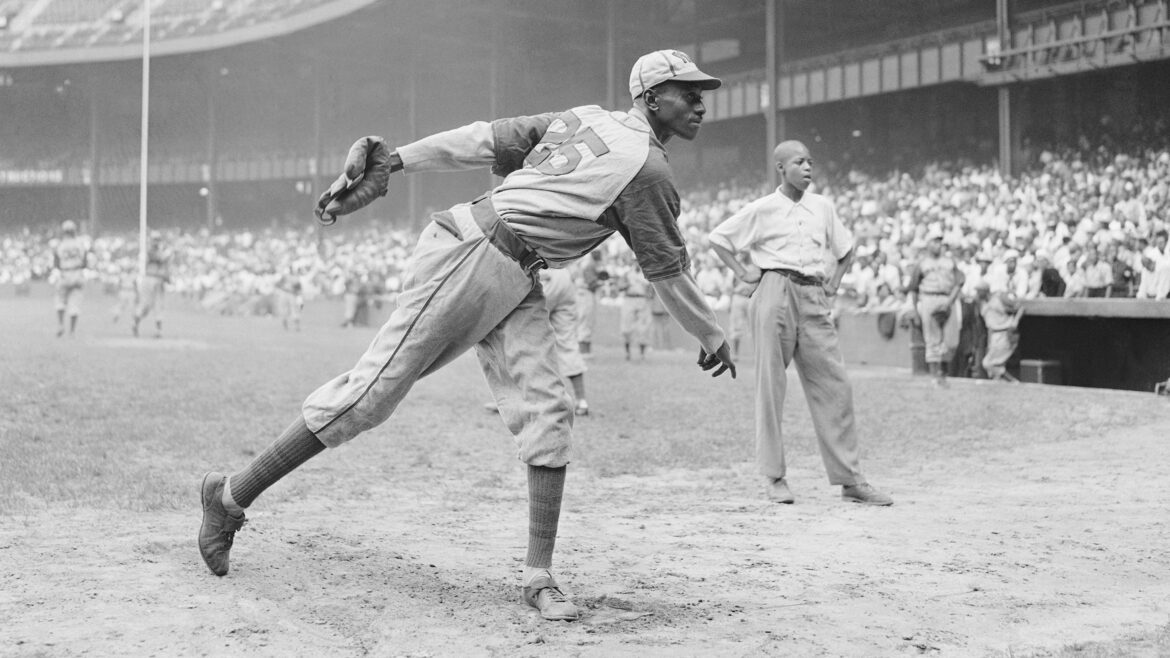
9(MDQ0ODU2MzU2MDE1NTM3MTIwMjFiMDhjNA000))
